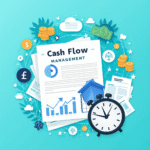The Best Retirement Plans for Small Businesses: Part 1
If you haven’t set up a tax-advantaged retirement plan for your small business yet, don’t worry—you’re not alone. But putting it off could mean paying more in taxes and missing out on preparing for your future. The good news? It’s not too late to take action.

This guide is here to help you understand the best retirement plans for small businesses, whether you’re running a single-owner operation or a husband-wife business. Let’s dive in.
Why a Retirement Plan Matters
Having a retirement plan can save you money on taxes today and help secure your financial future. By contributing to a tax-advantaged account, you’re not just planning for retirement—you’re letting Uncle Sam help fund it.
Key benefits include:
- Tax savings: Contributions are tax-deductible, reducing your taxable income.
- Tax-deferred growth: Investments grow tax-free until you withdraw them.
- Flexibility: Some plans let you adjust contributions based on your cash flow.
The sooner you start, the more you’ll benefit—thanks to the power of compound interest.
Types of Small Business Retirement Plans
Small business retirement plans generally fall into two categories:
- Defined contribution plans: These plans focus on how much you contribute annually.
- Defined benefit pension plans: These plans guarantee a specific benefit at retirement.
Let’s look at defined contribution plans first.
Defined Contribution Plans: The Basics
Defined contribution plans allow you to make annual, tax-deductible contributions up to a maximum limit set by law. Contributions are flexible, so you can adjust or skip them in lean years.
Here are the most common types of defined contribution plans:
- Simplified Employee Pensions (SEPs)
- SIMPLE IRAs
- Solo 401(k) and family 401(k) plans
- Profit-sharing plans (like Keogh plans)
Your retirement savings depend on:
- How early you start contributing.
- How much you contribute each year.
- Your investment returns.
There’s no cap on how much you can accumulate, so starting early and investing wisely are critical.
How to Maximize Your Retirement Savings with the Best Retirement Plans for Small Businesses
The earlier you start, the less you’ll need to save each year to hit your retirement goals. Consider this example:
The Cost of Waiting
John and Ron, twin brothers, both want $1 million by age 65. John starts saving $2,000 annually at age 24, while Ron waits until he’s 30. Here’s the difference:
| John | Ron |
|---|---|
| Starts at age 24 | Starts at age 30 |
| 6 contributions of $2,000 = $12,000 | 33 contributions of $2,000 = $66,000 |
By starting six years earlier, John saves far less out of pocket and still reaches his goal. This highlights the power of compound interest and early investing.
The Impact of Your Investment Returns
Your rate of return has a massive impact on your retirement savings. Here’s what a $3,500 annual investment looks like over 30 years at different rates:
| Rate of Return | Total Savings |
| 2% | $144,828 |
| 5% | $244,163 |
| 10% | $633,302 |
| 20% | $4,963,903 |
Clearly, even a small increase in your return can dramatically grow your nest egg. That’s why choosing smart investments is so important.
Defined Benefit Pension Plans: Another Option for Small Businesses
A defined benefit pension plan guarantees a specific retirement payout. Contributions are mandatory and based on calculations by an actuary, factoring in your current earnings, years to retirement, and projected investment returns.
These plans work well for small business owners over 45 with high, steady incomes. However, they come with higher annual contribution requirements, so they’re not ideal for everyone.
How Much Can You Contribute to the Best Retirement Plans for Small Businesses?
Contribution limits vary depending on the plan and whether you’re self-employed or an employee of your own corporation. For example:
- SEPs: Up to 25% of compensation or $69,000 (whichever is less, as of 2024).
- SIMPLE IRAs: $16,000 annually, with an extra $3,500 if you’re 50 or older.
- 401(k)s: $23,000 annually, with an extra $7,500 for those 50+.
What’s Next?
This is just the beginning. In future articles, we’ll dive deeper into each type of retirement plan, covering their rules, benefits, and best practices. We’ll also explain when you might need to make contributions for employees other than yourself or your spouse.
Start planning your retirement today—your future self will thank you. For questions on these retirement plans, feel free to reach out to us on (657) 413 0211.
Still thinking about how to save on your tax before the year ends, here is our post on tax strategies you can employ.
To learn how to earn tax-free income with the Augusta Rule, we have this article with all the information you need.
EIN? What is it and how can you apply for it for your business? Read about it here and follow the IRS guidelines and set your business up for success by applying for an EIN today!





